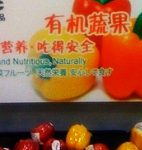A pioneering Chinese company is to market pasteurised Tibetan yak milk in Beijing, Shanghai and Guangzhou, in the hope that it will become a new “superfood” in the world’s most populous country.
At 24 yuan (US$3.50) for a small, 250-millilitre carton, Feifan — meaning “uncommonly good” — costs several times as much as cow’s milk. “It’s very natural, green, pure and high-quality. That’s our big selling point — we aim at the high-end market,” said Ding Pengcheng of the Treasure of the Plateau Yak Milk Company.
Over the next three years, the company is to spend millions to crack the domestic and international markets, with the help of Chinese state investment. Yaks produce fewer than 300 litres of milk a year, while cows yield 35 times as much. The company pays Tibetan farmers 16 yuan or more per litre, eight times the price of standard milk.
The Chinese Nutrition Society, a health ministry-backed research institute, says the amino acids, calcium and vitamin A in yak milk are considerably higher than in cow’s milk. Its appeal depends as much on the mystique of its origins as its nutritional qualities. Feifan is undergoing extra safety checks because of China’s recent milk contamination scandal. Yet, in the long run, such concerns could boost the desire for products that combine modern hygiene with unsullied, back-to-the-land imagery.
Tsering Droma is a typical Tibetan herder who now can look forward to tapping the Chinese market. Born into a herding family, she tends 30 yaks on steep slopes near the Karola pass.
The animals are central to Tibetan culture: their butter is melted into tea and fuels the lamps that light monasteries. Dung keeps fires burning; bones are carved into beads. Yaks provide Droma and her family with everything they need. “Female yaks are very important to us: we can get milk, make butter and cheese and get extra money by selling it,” she said. “For the males, they can be used for transport. We can sell the yak skins and the meat and hair. All the parts can be sold. Then we buy things like grain.”
But 160 kilometres away in Lhasa, the Treasure of the Plateau company is transforming this hand-to-mouth livelihood into a serious business. It is marketing the traditional staple as a superfood for aspirational middle-class households across China and beyond. Steam seeps from the pipes of its Tetrapak production line as it heats gallon after gallon of milk to 130º Celsius (266° Fahrenheit). In 2003, the company sold just over two million yuan (nearly US$300,000) worth of goods; this year it is on course to bring in up to 90 million yuan (nearly US$13.2 million). Each day the local market consumes between three and six tonnes of its yoghurt.
The company’s first batches of milk arrived in bowls, carried on herders’ backs, and often with the unwelcome additions of insects and yak hair. Now they come in clean containers, usually delivered by motorbike or car — proof, says the company, that it is raising local incomes.
That does not make it immune from controversy surrounding economic development. Its expansion into markets around China would be all but impossible without the Tibet-Qinghai rail line, which critics say has damaged the environment and speeded the erosion of Tibetan culture. Seventy per cent of the company’s 110 staff members are Tibetan, but only a few are in senior posts. “Our company carries out a lot of training for our Tibetan staff, but most of them don’t have higher, college-level education,”Ding said.
At the least, the company — and the government money behind it — are supporting long-impoverished herders. The authorities have been heavily criticised for forcibly settling nomads. But this state investment is helping some to increase their incomes without having to abandon their heritage. It is what officials call “development with Tibetan characteristics”.
And yaks are as Tibetan as they come.
Copyright Guardian News and Media Ltd. 2008
—–
“Superfoods”, touted as especially nutritious or otherwise beneficial to human health, are attracting increased attention in a world where sustainability is a critical issue.
On our warming planet, populations are growing, the uses of arable land (food or fuel?) are at issue, water supplies can be precarious and the merits of genetically modified organisms in dispute.
Can superfoods make a significant impact, providing increased nutrition to more people, and helping to reduce the costs of health care? Are they worth the (sometimes) additional cost? Will they become luxury items for the few, or will the many be able to reap their benefits? Are you prepared to add new, even strange, foods to your diet? Yak milk, anyone?
Let us know on the forum what you think.


